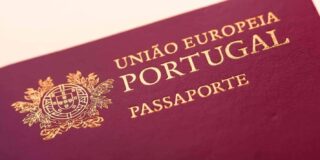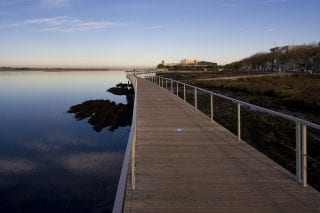Cork is incredibly valuable to the Portuguese. Portugal is considered the world capital of cork. The cork oak is even one of the countries’ national symbols alongside the flag and the national anthem! Read on to find out more about cork and everything related that Portugal has to offer: fun facts, history, applications, where to learn more about cork and activities to try!
Cork Applications
The number of cork stoppers produced annually worldwide would be enough to complete 15 laps around the Planet Earth. But cork stoppers are far from being the only application of this fascinating material! From NASA to Lady Gaga, cork has been utilized in the most useful and creative ways imaginable. It might also be interesting to see if Portugal is a multicultural country.
Cork – A Historical Context
Cork is a super light and elastic material, with thermal and acoustic isolating properties, waterproof and very resistant to friction and combustion. No wonder it has been used for a long time. So you have an idea of how long it has been ever since civilizations started working with cork, it was already widely used thousands of years before Christ was born!
Ancient Cultures and Cork
It was used in fishing and nautical instruments, in Ancient Egypt. The Roman Civilization continued to explore the virtues of cork in footwear and in layers to protect ceilings and roofs. They also used cork to cover liquid containers in order to make them easier to transport without spilling. And Medieval Monks found that they could make their rooms warmer during the cold winter months by coating the walls with cork. The cork oak has also been seen as a spiritual symbol for a long time. In Ancient Greece, cork oaks were regarded as a symbol of freedom and honor, clergymen being the only ones allowed to cut them down. You might also be interested in knowing about the history of Portuguese Tiles and why they matter so much.
Cork in Portugal
In the XV and XVI centuries, Portuguese shipbuilders used cork in the caravels that set sail to sea in search of the unknown during the Age of Discovery. Portugal is also a proud pioneer when it comes to environmental legislation since the first land laws that protect cork oak areas were approved in 1209!
Cork in Famous Portuguese buildings
During the XVI century, cork appears represented on the Window of the Chapter House, inside the “Convento de Cristo” in Tomar, a World Heritage Site. It can also be found coating the walls of some rooms in “Convento de Santa Cruz do Buçaco”.
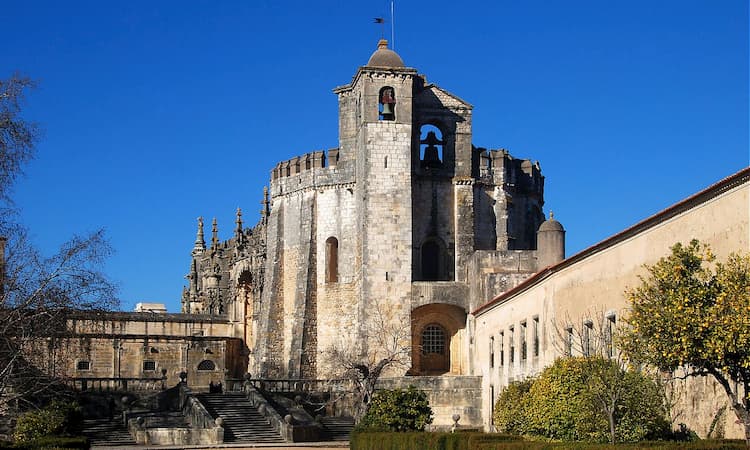
Founded in 1560 by Franciscan monks, “Convento dos Capuchos”, in Sintra, also has many walls covered in cork for it was said that it provided great comfort and spiritual contemplation conditions. For this reason, this convent is also known as the Cork Convent. Due to the growth of the Porto Wine industry, by the time we got to the XVIII century, the cork industry started to bloom in north Portugal. At that time, cork stoppers were completely carved by hand. An experienced worker would manage to complete 3 cork stoppers per minute.
Production of cork in Portugal
Portugal is the biggest producer of cork in the world. Out of the worldwide volume of exportations, 340 thousand tons per year, Portugal is responsible for more than 55%. This small country owns 25% of the cork oak area existent on the whole planet… It is considered Portugal’s most important industry. The majority of the cork oak areas can be found in Alentejo. The whole area is equivalent to 80 000 football fields. So if you ever get a chance to (and you definitely should) visit the beautiful region of Alentejo, the cork oaks will be hard to miss.
Cortiçeira Amorim
Cortiçeira Amorim is the biggest company of cork products in the world and one of the biggest international Portuguese companies. It has a long legacy and up till they remain active in several countries.
Extraction Process
Cork is a 100% natural material, fully reusable and can be extracted from the cork oak without ever harming the normal development of the species and without damaging the tree. It takes 25 years to execute the first extraction of bark from the cork tree, and about 40 years to be able to produce cork for stoppers. For that reason, there is an old saying in Portugal that goes like “Those who care about their grandchildren plant a cork tree”. After the first extraction, the following ones should be done every 9 years, a process that can be repeated about 17 times. That may take over 200 years to accomplish.
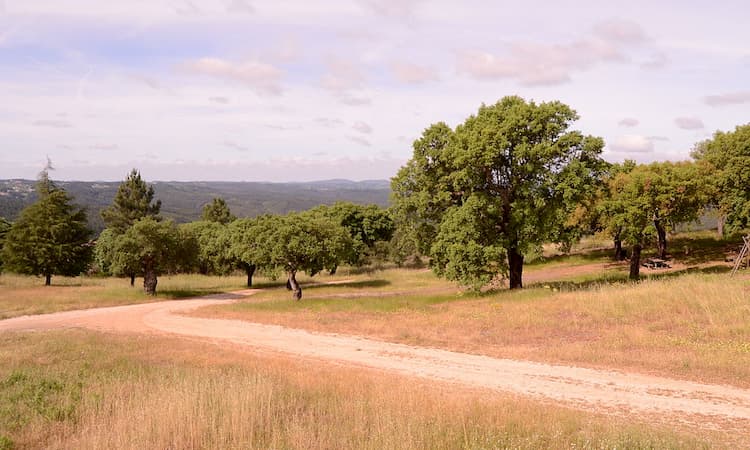
The first two extractions result in the so-called ‘virgin’ and ‘secondary’ cork, whose properties are suitable for insulation, and products for construction, fashion, design, energy production and aerospace industries. From the 3rd extraction on, after 40 years, the cork acquires a smooth texture that makes it suitable for the production of cork stoppers.
An Unparalleled Cork Harvest in Portugal
The harvesting usually happens from May to August, this being the period in which the tree growth is more active, making it easier to extract the bark without damaging the trunk. After the extraction, the cork oak begins a self-regenerating process unseen in any other forest species. The tree ends up dying if the cork is never extracted. The whole procedure is passed down through generations since it still has a big human hand dependence for lack of machines capable of doing all the work required, with desirable outcomes. For this reason, cork extraction is one of the most well-paid jobs in the world in the realm of agricultural work. See here the 10 best places to visit in Alentejo, Portugal.
The Whistler Cork Oak
The oldest cork oak in the world is known as the Whistler Cork Oak and it is 235 years old. Its name comes from the sound of the birds found in its branches. Planted in the village Águas de Moura, it has been through more than 20 extractions and produces more cork in a year than many trees do in a lifetime. In 1991 it produced 1200kg of cork, originating more than 100 000 stoppers.
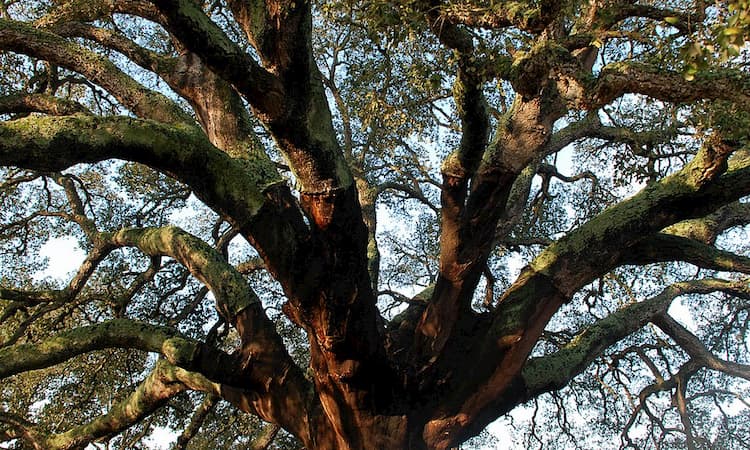
Don’t forget to subscribe to our newsletter to get more information about things related to Portugal.
The diversity of cork uses
Cork Stoppers
In the XVII century, the French monk Dom Pierre Pérignon, known for the champagne, refashioned the wine industry by substituting wood for cork in bottle stoppers. Cork’s flexibility and elasticity make it ideal to fit bottlenecks. It can adapt to glass variations caused by temperature changes, maintaining the sealing and preserving the qualities of the wine. Other beverages such as whiskey and tequila also use cork stoppers.
Clothing and Accessories
Cork has been used to produce footwear for a long time. Its properties help posture and decrease physical fatigue when applied to shoes and floors. But there are countless other uses in the clothing and accessories industry, like:
- bags;
- hats;
- belts;
- ties;
- wallets;
- earrings;
- bracelets;
- necklaces, etc.
During the 2010 Nato Summit in Lisbon, Barack Obama, Angela Merkel, and Hillary Clinton all received gifts made out of cork. Bo, the former USA President’s Portuguese breed dog also received a cork collar… Here’s a list of some stores where you can find an enormous diversity of cork products:
- https://corkshop.online/
- https://www.lojadacortica.pt/
- https://www.lojadaspeles.com/pt/artigos-em-cortica
- https://www.montado.pt/
- https://artelusa.pt/
- http://www.luxcort.com/
- https://www.grupoalbatroz.pt/albacork/
- http://www.corkforme.com/
If you’re visiting Portugal we recommend you see our article about the most typical Portuguese Souvenirs
Sports
The sports industry uses cork to maximize the performance of baseball, hockey and golf balls; badminton flyers; dartboards; ping-pong rackets and surfboards. Garrett McNamara, known for surfing one of the biggest waves ever surfed (23,8m) in Nazaré, owns a surfboard made 100% out of cork.
Science and Health
NASA has been using cork for decades to protect thermal shields and coating plates of their spaceships. In 1665, Robert Hooke coined the term “cell” after observing through the microscope the polyhedral cavities on a piece of cork. And did you know that the contact between cork and wine leads to the formation of antioxidant and anticancer compounds with the power to reduce the risk of developing cardiac and degenerative diseases? Besides that, leftovers from the cork industry originate particles that are applied in vaccine adjuvants to promote a better immune response and, thanks to their hypoallergenic qualities, cosmetics are including these particles.
Cork as an art form
Inspired by Gustav Klimt’s art and Lady Gaga’s music, Teresa Martins (stylist and designer) created an outfit with cork, silver, and gold. Lady Gaga herself used the dress and accessories, which took more than 2 years to produce, in 2014. Chicago artist Scott Gundersen also used cork in his art, taking 50 hours and 9217 cork stoppers to create a huge portrait of his friend Grace. The artist Joana Vasconcelos teamed up with Corticeira Amorim, the biggest producer of cork in Portugal, to transform the boat “Trafaria Praia” using cork, taking advantage of the material’s technical performance and versatility in terms of aesthetics. Cork particles have also found utility in special effects of explosions in the cinema!
Cork in Portugal – Cultural opportunities
So, where can you go and what can you do to learn more about this part of Portugal?
Cork Museum
Created by Henrique Amorim in 1950, the “Santa Maria de Lamas” Museum also known as the Museum of Cork, exhibits a beautiful Religious Art collection and various art pieces made with cork. The entrance fee is 3€ for adults and 2€ for students and seniors. It’s well worth a visit! It’s open from 9:30 am until 12:30 pm and then from 2 pm until 5 pm every day except on some national holidays. You can get there either by taking a train to Rio Meão or a bus to Santa Maria da Feira followed by a taxi to Santa Maria de Lamas.
Contacts
- Address: Largo da Igreja, 90, Parque de Santa Maria de Lamas 4535-412
- To call the Cork Museum +351 91 664 76 85
- To e-mail the Cork Museum [email protected]
If you are thinking about going from Porto, don’t forget to visit Aveiro!
Cork Tour
The cork tour (by Algarve Rotas) will lead you through the mysteries of the relationship between humans and cork oaks. You’ll be able to see the fields, hear some stories, learn about the harvesting and techniques to work with cork and you’ll travel to picturesque villages of Algarve to try some traditional flavors as well. The itinerary is organized in 6 thematic sites, each related to patrimony, nature, rural life, tradition, innovation and knowledge, respectively. The tour starts at the “Museu do Traje de São Brás de Alportel” or Algarve Costume Museum and ends at a cork factory. You can get there by taking a train or bus to Faro followed by a bus to São Brás de Alportel. And at 11,50€ per person, it’s a great opportunity to learn more about cork in Portugal.
Contacts
- Address: R. Dr. José Dias Sancho 61, 8150-141 São Brás de Alportel
- To call Algarve Rotas +351 918 204 977
- To e-mail Algarve Rotas [email protected]
Visit Portugal and Learn more about cork
Now that you know more about cork and its incredible history and properties, we invite you to come to Portugal and actually experience it all! Did you find this information useful? Is there anything else you wish to know about cork in Portugal? Feel free to contact us!




